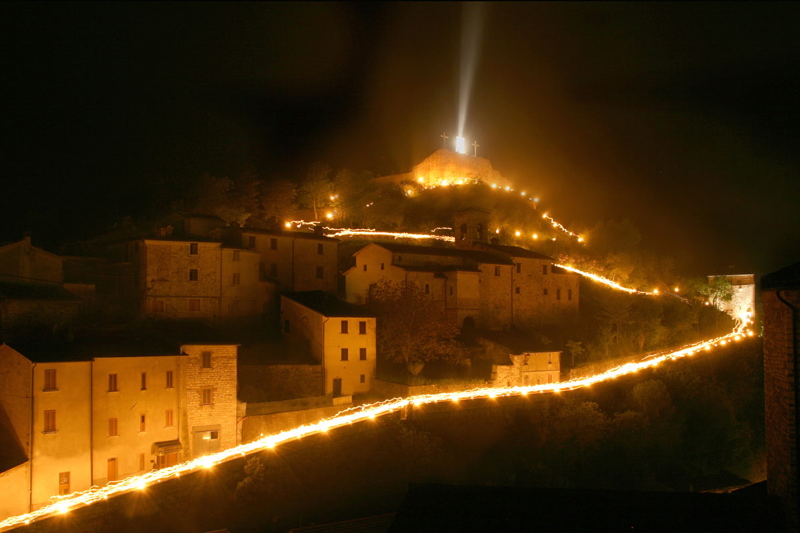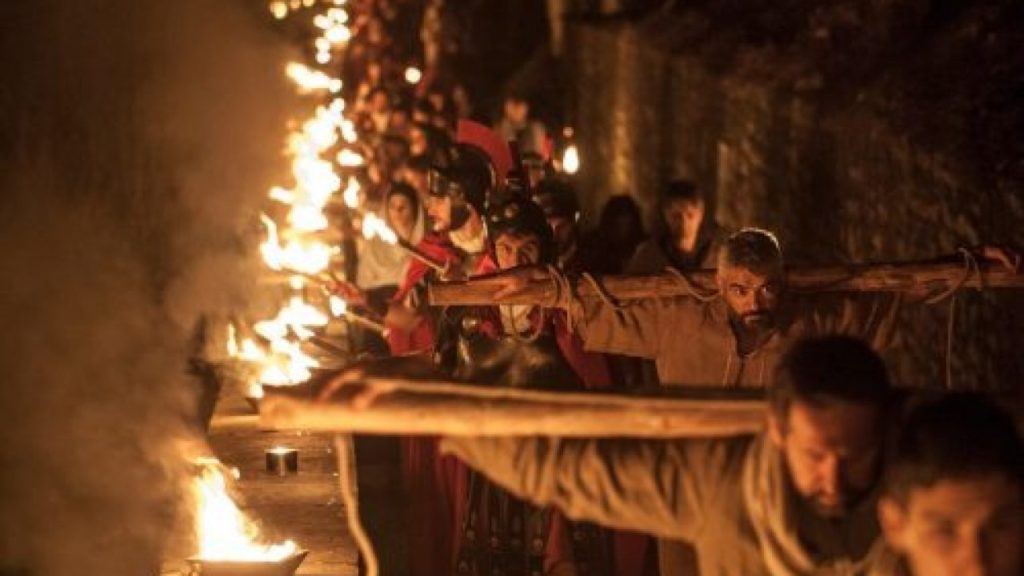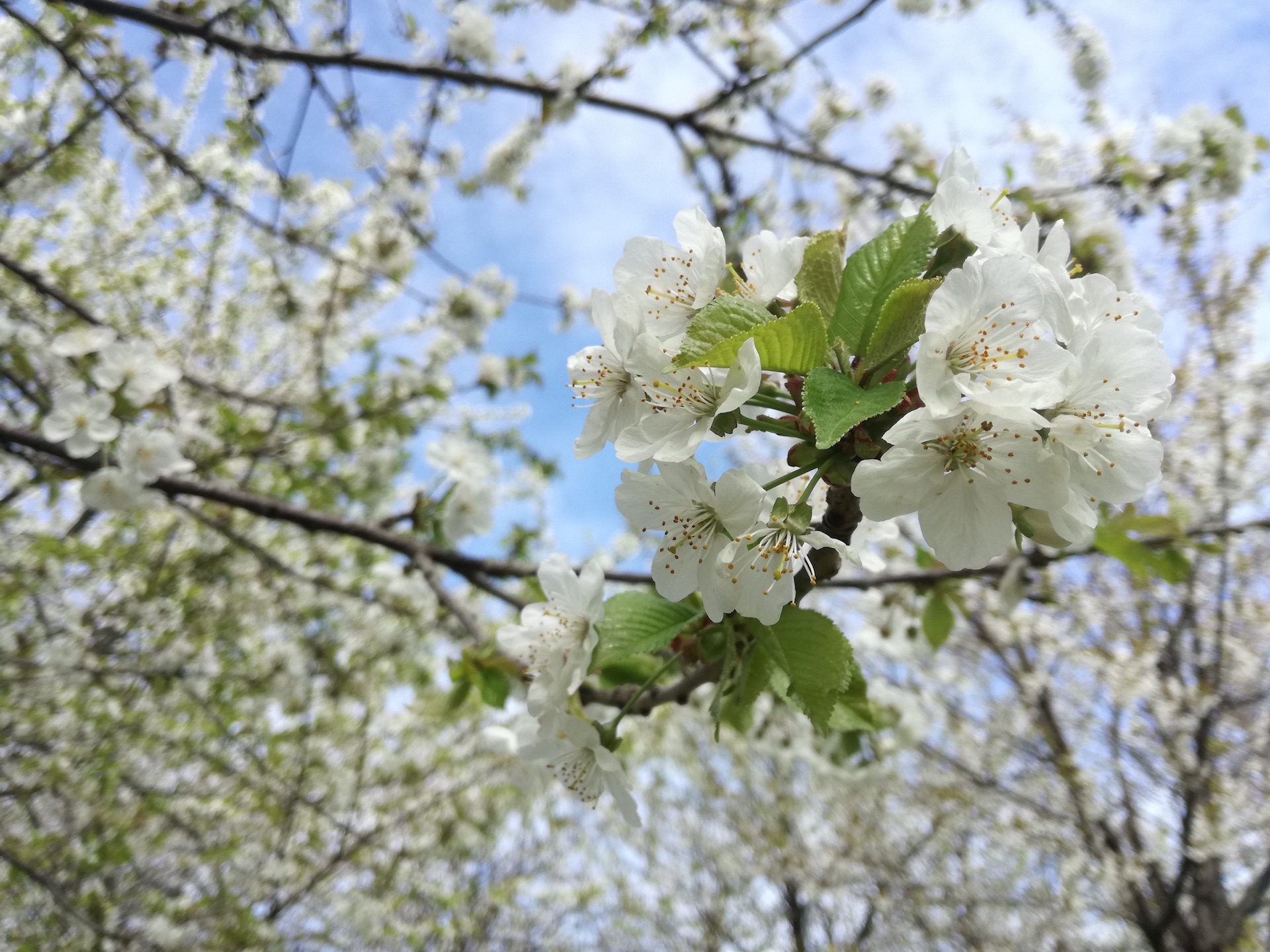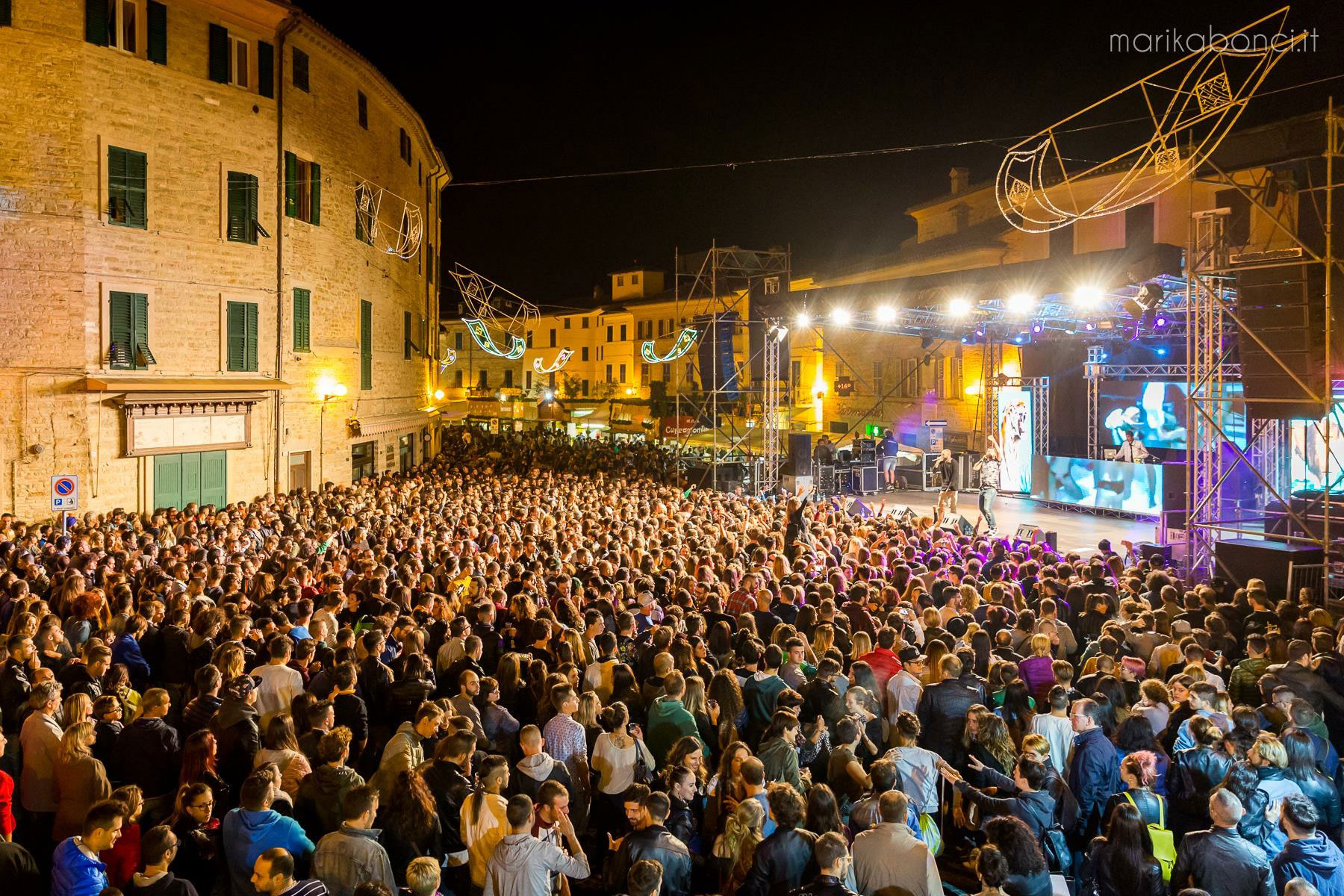Good Friday in Cantiano – La turba

Cantiano raises higher above the sea level than any other town in the whole province of Pesaro –Urbino. Placed near the Catria range, on the border between Marche and Umbria, this medieval village is surrounded by wide and tall, centuries-old beech-tree woods including the Tecchie forest. Crossed since ancient Roman times by the Flaminia road, it boast a rich artistic and architectonic patrimony consisting of fortresses, churches and palaces which, further to witnessing its historic centre’s antiquity, deserves being visited: St. John the Baptist’s collegiate church, St. Nicolo’s, St. Augustin’s, St. Ubaldo’s, the most ancient St. Crescentino’s parish church, probably dating back to the end of the 10th century. And also the City hall, in Luceoli square, and the museum hosted in the halls of the former Augustinian 13th century convent.

The territory boasts two more peculiarities: one is visciola di Cantiano, a spontaneous native black cherry, a precious and famous and internationally appreciated fruit, the other the Chiaserna bread, a typical product whose delicious taste is due to the use of source water and the absolute absence of additives and preservatives in producing it.
A remarkable event is la Turba (The Crowd), a sacred Good Friday re-enactment of the Christ’s Passion on the town roads, with costumed extras and unique scenes. Though not directly, it originates from the popular movements begging for peace, which rose in Marche and Umbria around the mid 13th century, when, tired of suffering because of the never ending fights between the Guelph and Ghibelline factions, the humblest and poorest people marched on the streets. The Turba of Cantiano was stopped during World War II only, and kept growing in importance year after year. Every year on Good Friday, no matter the weather, the re-enactment begins at 8 p.m. Nationally acknowledged as one of the most ancient and important popular events, The Turba of Cantiano begins with background hymns and songs and the deep sound of the Roman soldiers’ drums; it ends with the erection of three empty crosses and the message of hope offered by the resurrection of the Christ.


